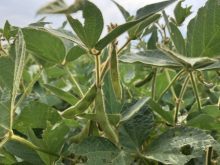A recent Western Producer article suggested that using seed from hybrid plants would result in a “dog’s breakfast” crop. These crops would include characteristics from both parental lines, including differences that could make chemical management difficult. If most of the problems with using mixed varieties are associated with chemical use, perhaps mixed varieties are worth consideration for organic producers.
Modern agriculture’s dependence on monocultures is so complete that we often forget that mixtures have been common in early, traditional and subsistence systems. There is evidence they give more stable yields and are helpful in pest management.
Read Also

Higher farmland taxes for investors could solve two problems
The highest education and health care land tax would be for landlords, including investment companies, with no family ties to the land.
The most spectacular demonstration of the benefits of mixtures is a study in Yunnan province, China, where thousands of fields were planted to rice mixtures in an attempt to reduce blast, a devastating fungal disease.
Blast was 94 percent less severe in mixtures than in susceptible monocultures. Disease levels in mixtures were considered acceptable and fungicide use was eliminated. Yields were considerably increased.
Similarly, wheat mixtures in research trials in the United Kingdom reduced disease levels from powdery mildew, septoria and leaf rust.
There are several ways that mixtures may be less vulnerable to disease than monocultures. In a monoculture, susceptible plants are surrounded by susceptible plants, so diseases can spread easily. In a mixture of susceptible and resistant plants, the resistant plants act as a barrier, making spread more difficult.
If susceptible plants succumb to the disease, resistant plants may be able to compensate by growing larger and producing more seeds. In addition, plants that are exposed to diseases experience an immune response and become more resistant.
Mixtures can also slow disease by acting on the disease itself. A pathogen can adapt more readily to a uniform crop, becoming more able to cause disease.
In a mixed crop, selection pressures are more varied and evolution of the disease is slowed.
While it may be ideal to simply grow the best variety, it can often be difficult to determine in advance which varieties will perform the best.
A single type might be best if the environment is relatively uniform, and some would argue that high input systems create such a uniform environment, although they cannot eliminate the variability caused by weather. In practice, farm fields, perhaps especially organic farm fields, are highly variable environments: from year to year and across the field.
Designing mixtures can be an art. Producers have used a small proportion of awned wheat in a largely awnless mixture because the awnless variety was preferred, but the awned variety increased air flow through the swath and prevented it from retaining too much moisture.
Other producers have mixed short durum varieties with preferred taller varieties to help resist lodging. An ideal mixture may include varieties that differ in disease resistance, that have different desired traits or that complement each other well.
There are some cautions in designing the mix. Matching the maturities of the varieties in the mixture will reduce headaches at harvest. It is also important to be sure that the buyer of the crop accepts the mixture.
Mixtures are not likely to be a problem for hard red spring wheat and durum or for crops used for feed, but other crops may be more variety specific. This is especially true of malting barley.
Although a quality beer may be produced by combining malts of different varieties, the varieties must be malted separately to assure quality. Other end users may have similar concerns, preferring to blend their own mixtures of varieties.
Mixtures of crops such as peas and lentils, which have visually different varieties, would have to be acceptable to the buyer as a mixture or be so different in size that they could be separated.
So do mixtures have to be a “dog’s breakfast?” A carefully planned mixture, with good harvestability and a good market, could be an ideal crop for an unpredictable and variable environment. Increasing diversity, even at this level, can reduce risk and improve stability.
Frick is the Prairie co-ordinator for the Organic Agriculture Centre of Canada located at the University of Saskatchewan. Frick can be reached at 306-966-4975, at brenda.frick@usask.ca, or www.organicagcentre.ca.The opinions expressed in this column are not necessarily those of The Western Producer.














